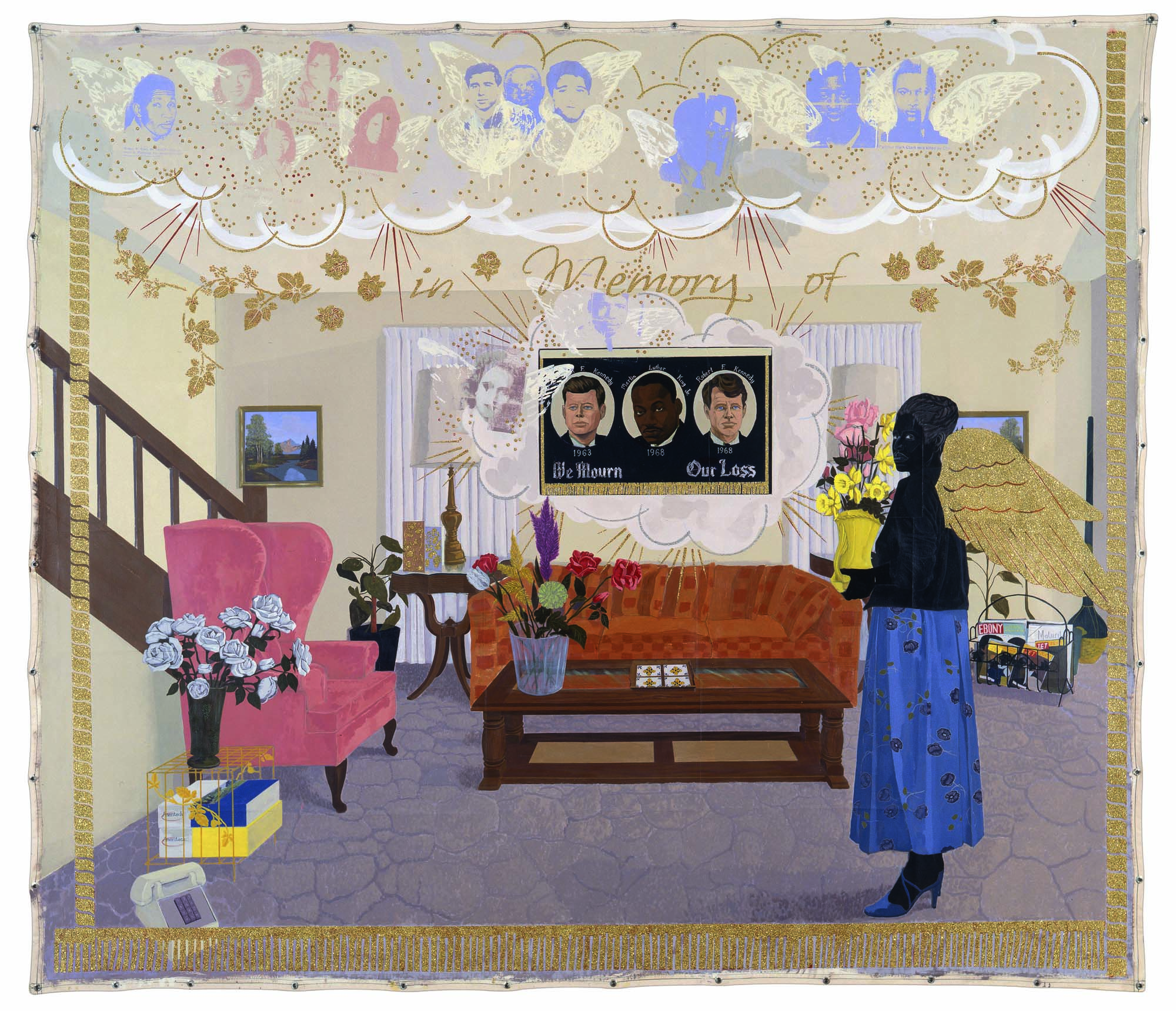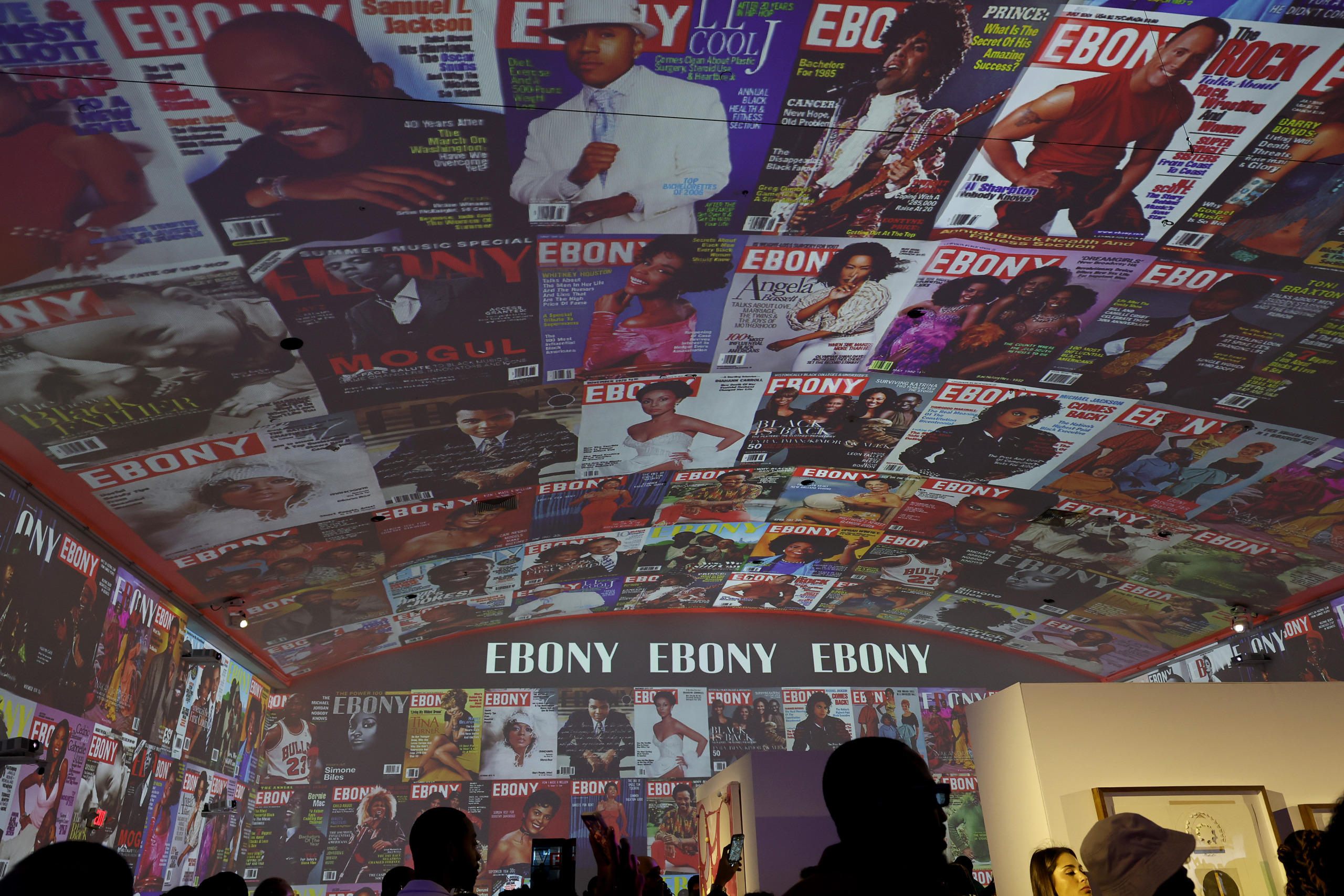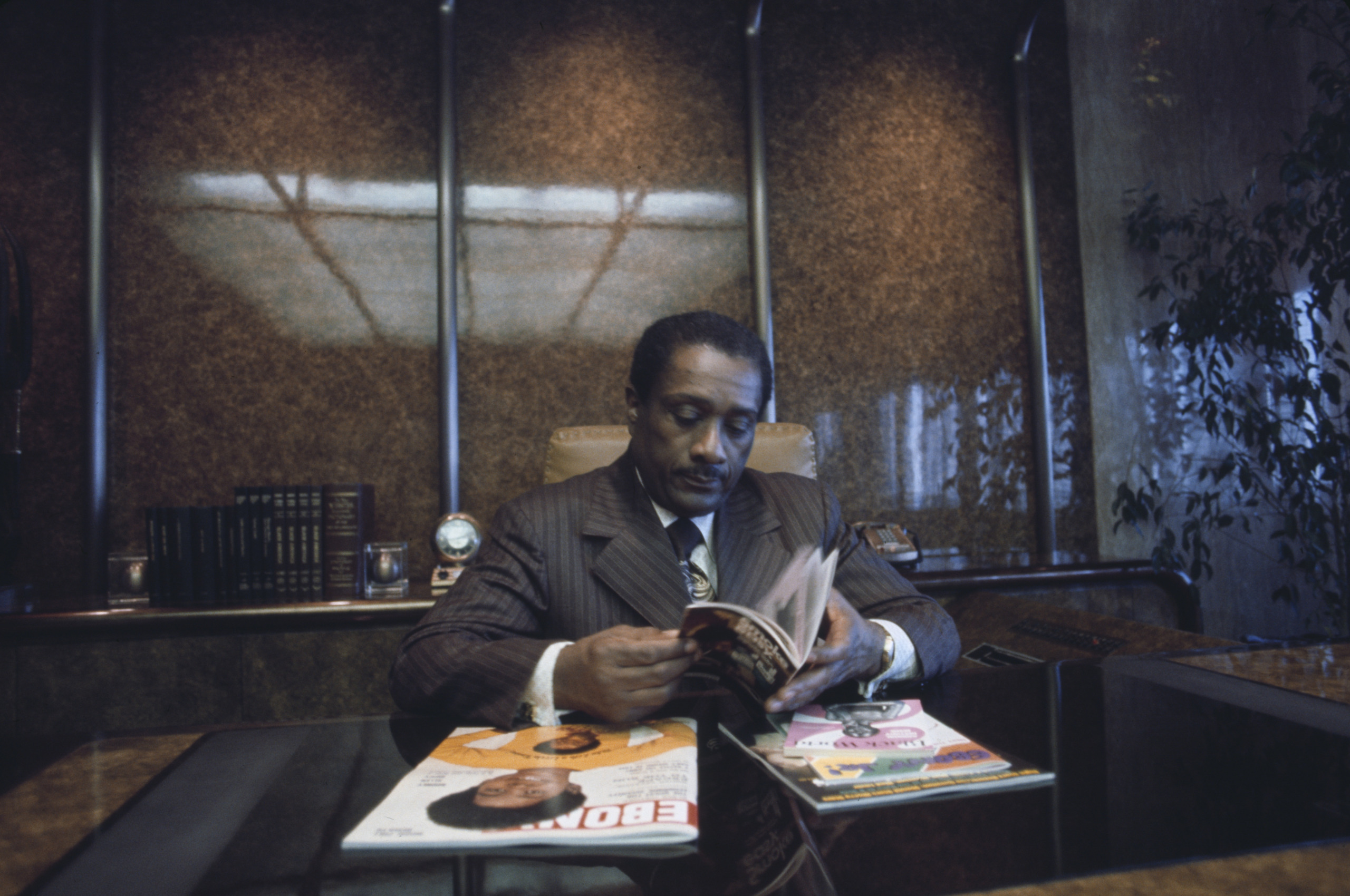
This summer, I mailed off a treasure trove of old family photographs for digitization to make them easily shareable between my parents, brothers and cousins. Only a precious few snapshots displayed time stamps on the back; most did not. When appreciating all these priceless memories in the cloud, a slight pattern emerged. Present in the background—on coffee tables, nightstands, in the hands of family—EBONY or JET magazines appeared in many of these analog pics from the 1970s and ’80s. A print of my mom lounging in the bedroom of an apartment I barely remembered had no specific year marked on it. But right there was basketball star Wilt Chamberlain on the cover of the EBONY magazine in her hand, identifying the time as January 1974.
For 80 years, in so many African American places and spaces, EBONY has been there to mark our lives and times. As CEO Eden Bridgeman Sklenar often remarks, “EBONY is the heartbeat of Black culture.”

As an ever-present beacon for honoring Black excellence and achievement, EBONY has chronicled diversity, equity, inclusion, and access long before such ideas were controversially targeted. Celebrating the multiplicity of Black success represented by covers featuring Billie Holiday, Thurgood Marshall, Joe Louis, Dick Gregory, Aretha Franklin, Michael Jackson, Redd Foxx, Shirley Chisholm, Jesse Jackson, Kendrick Lamar and “forever First Lady” Michelle Obama, EBONY has archived the Black experience in the analog and digital eras like no other.
For over a decade, the EBONY Power 100 list has honored heroes of the Black community—innovators, leaders, and change-agents across the varied industries of business, sports, media, politics, STEM, art, and entertainment. As an extension of the mission of legendary EBONY founder John H. Johnson to uplift the hearts and spirits of Black America, the EBONY Power 100 list celebrates a unique cadre of our nation within a nation whose achievements we can mirror, commend and emulate.

Business disrupters, community crusaders, entertainment powerhouses, influential creators, sports leaders, media mavens, music innovators, STEM trailblazers, and the all-important Generation Next—all deserve their pride of place on the 2025 EBONY Power 100 list. Artists in residence like newly appointed Alvin Ailey American Dance Theater artistic director Alicia Graf Mack; Monica L. Miller, guest curator of the recent Metropolitan Museum of Art exhibit, “Superfine: Tailoring Black Style”; and Baltimore-based artist and activist Derrick Adams… they all represent Black brilliance in the fine arts to the fullest.
From the Black Is Beautiful cultural sloganeering of the 1960s to the Black Lives Matter social movement of the present day, the iconic EBONY brand has always given our community its flowers for persevering and prospering in the midst of indifference and antipathy from society at large. Way before “for us, by us” entered the Black American lexicon, EBONY embodied that ethos since its founding in November 1945.
“EBONY was literally part of our families,” said the foreword of 2021’s EBONY: Covering Black America, the collected volume of 75 years of our storied magazine. Recently, finding various issues of EBONY arranged in the digital family photos of my childhood came as no surprise. On an Atlantic City weekend getaway, there’s my father with EBONY, its headline announcing, “The Private World of Muhammad Ali” (September 1972). On a Christmas day at my grandparents’ house, on a side table with walnuts and swirled peppermint candy, there’s an EBONY with child actor Rodney Allen Rippy (February 1974).
And today, eight decades later, those covers still speak from our mantels and memory boxes. EBONY remains more than a magazine; it’s a reflection of who we were, who we are, and who we’ve always known ourselves to be.
Miles Marshall Lewis (@mmlunlimited) served as EBONY’s Arts & Culture Editor (2012-2016) and has written a dozen EBONY cover profiles, including interviews with Prince and Michelle Obama.